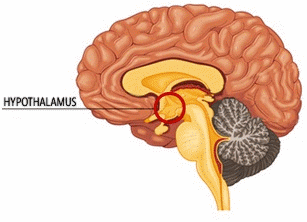 The hypothalamus contains a group of nerve cells that functions as a thermostat
Hypothalamus helps to respond to changes in body temperature above or below a normal range by activating mechanisms that promote heat loss or gain. Fever is the result of a change to the set point for a biological thermostat.
The hypothalamus contains a group of nerve cells that functions as a thermostat
Hypothalamus helps to respond to changes in body temperature above or below a normal range by activating mechanisms that promote heat loss or gain. Fever is the result of a change to the set point for a biological thermostat. The regulation of body temperature in humans and other mammals is a complex system facilitated by feedback mechanisms.
Nerve cells that control thermoregulation, as well as those that control many other aspects of homeostasis are concentrated in a region of the brain called the hypothalamus. The hypothalamus contains a group of nerve cells that functions as a thermostat, responding to changes in body temperature above or below a normal range by activating mechanisms that promote heat loss or gain. Fever is the result of a change to the set point for a biological thermostat.
Nerve cells that sense temperature are in the skin, in the hypothalamus itself, and in several other body regions. Warm receptors signal the hypothalamic thermostat when temperatures increase; cold receptors signal temperature decrease. At body temperatures below the normal range, the thermostat inhibits heat loss mechanisms and activates heat–saving ones such as vasoconstriction of superficial vessels and erection of fur, while stimulating heat–generating mechanisms (shivering and non-shivering thermogenesis). In response to elevated body temperature, the thermostat shuts down heat retention mechanisms and promotes body cooling by vasodilation, sweating or panting. The thermostat can also respond to external temperature even without changes in body core temperature.